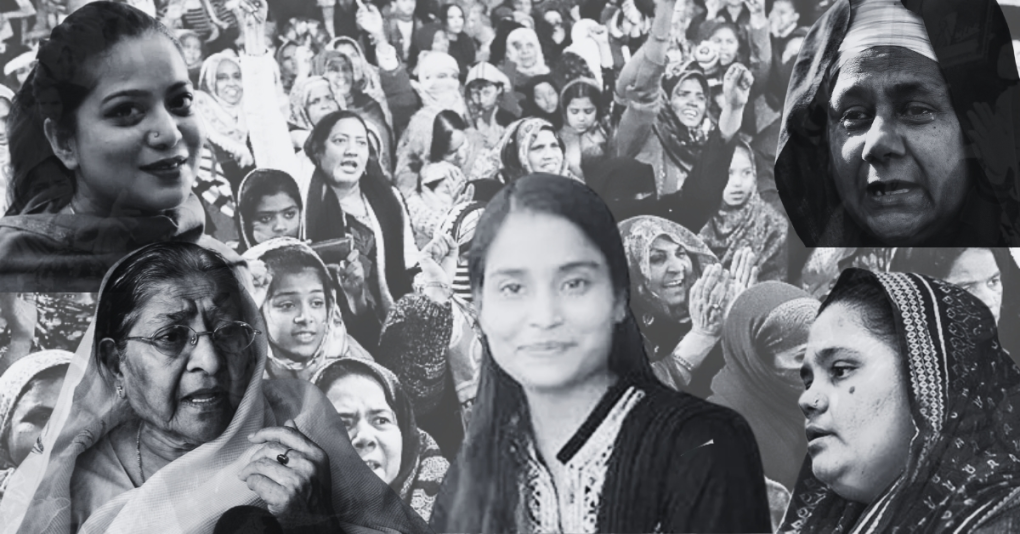On International Women’s Day, March 8, while the world celebrates achievements in gender equality, it is equally important to honour the women whose courage and resistance have shaped the struggle for justice in the face of systemic oppression. These are women who, despite being victims of unspeakable brutality, refused to be silenced. They bore witness chroniclers, and were the seekers of justice after independent India’s most horrific communal conflicts. From the anti-Sikh pogrom of 1984, the Gujarat genocidal carnage of 2002 to the Delhi violence of 2020, women have not only endured the worst forms of gendered violence but have also led the battle to document the truth and hold perpetrators accountable.
Their testimonies have been crucial in exposing state complicity, resisting the erasure of history, and demanding accountability. Yet, their pursuit of justice has been met with intimidation, legal obstruction, and, in some cases, criminalisation. Across these three instances, a grim pattern emerges: the deliberate targeting of women, the systemic failure of institutions meant to protect them, and the extraordinary resilience with which they have fought back.
1984 anti-Sikh pogrom: Survivors bore became the voice of the battle for justice
The anti-Sikh riots of 1984 resulted in the targeted killings of close to 3,000 Sikh men in Delhi alone though the all-India figures are higher. The targeted violence left behind a generation of widows who not only survived brutal gendered violence at the time, but also bore the burden of documenting the atrocities and seeking justice for over three decades. These women, who were often left to fend for themselves by a cruel state apparatus, after witnessing the murders of their male relatives, rose out of the tragedy to become among the strongest voices to reclaim memory and assert the cries for justice. It was their collective voice that ensured that the history of the massacres was not erased. Their testimonies and persistent legal battles formed the backbone of efforts to hold the perpetrators accountable.
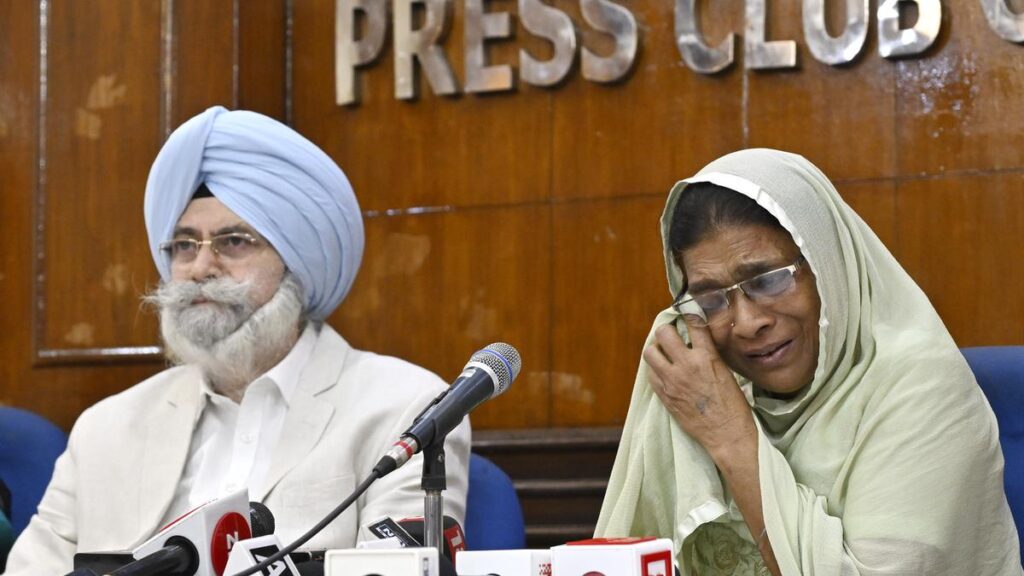
The Sikh women who survived the 1984 riots had to overcome the dual trauma of sexual violence and the loss of their families. Many were raped in front of their own children, while others were kidnapped and tortured for days. Their homes were looted and burned, leaving them homeless and destitute. The legal system and government, rather than offering justice, attempted to silence them through intimidation and bureaucratic neglect. Yet, these women refused to let the world forget what had happened.
Women like Nirpreet Kaur, who was 16 when she witnessed her father being burned alive, dedicated their lives to collecting evidence, documenting survivor testimonies, and ensuring that cases against the perpetrators remained alive. Kaur, despite facing police torture, years of imprisonment under false charges, and the loss of two husbands, continued to fight for justice. She meticulously gathered witness statements, encouraged other widows to testify, and resisted repeated offers of bribes and compensation meant to buy her silence.
Similarly, many widows who had lost their husbands and sons stood as the primary eyewitnesses in court. Their testimonies were critical in exposing the involvement of political leaders who had orchestrated the violence. Women who had lost everything, such as Pappi Kaur, who saw 11 of her male relatives burned alive, and Bhaagi Kaur, who was left to raise her children in abject poverty, took the stand despite threats and intimidation. Their courage ensured that the narratives of rape, murder, and destruction remained central to the legal battle.
The state machinery worked relentlessly to suppress the voices of Sikh women. Many were offered financial compensation to withdraw their cases, while others faced direct threats to their lives and families. Witness protection was virtually non-existent, with police officers themselves leaking information to the accused. In one instance, police allegedly warned a witness that her children would be killed if she continued to testify.
Despite these threats, Sikh women continued to push for legal accountability. They filed affidavits, attended court hearings, and worked with human rights lawyers to challenge the impunity granted to perpetrators. Their efforts led to the reopening of cases, the formation of commissions, and, after decades of struggle, the eventual conviction of senior politicians such as Sajjan Kumar in 2018.
The importance of women’s testimonies in the Sikh pogrom
The testimonies of Sikh women were instrumental in revealing the premeditated nature of the violence. Unlike the state’s claim that the riots were spontaneous, these women detailed how mobs were armed with chemicals, iron rods, and torches; how police officers either stood by or actively participated; and how political leaders directed the killings. Their statements also underscored the targeted sexual violence inflicted on Sikh women as a means of communal humiliation.
At the time, after the mob set Darshan Kaur’s husband ablaze, she gathered her three children, the youngest just 15 days old, and ran. In the frenzy, the baby slipped from 19-year-old Darshan’s hands. But there was no time to stop. For the next three days, she and the remaining two children ran from the police station to gurudwara searching for a safe place. Yet she has not given up and remains the haunting yet strong figure for justice for the survivors of 1984.

The fight for justice was long and arduous. It took 26 years for the trial of Sajjan Kumar to even begin, and even then, convictions came only after relentless pressure from survivors like Nirpreet Kaur. Many Sikh widows, facing extreme poverty, had to make painful choices—some accepted financial compensation in lieu of pursuing legal battles, while others withdrew their cases due to fear. Yet, those who persisted forced the legal system to reckon with the atrocities committed in 1984.
Some women were denied even dignified rehabilitation. There is Satpal Kaur, 13 years old and the eldest of four girl survivors at the time. Suddenly from living a normal middle-class life, on November 1, 1984 everything changed. Four members of their family, their father, mother, brother and uncle, were killed and only the four sisters were left alive. As the eldest, Satpal Kaur, was 13 and the youngest girl only four years old at the time, and finally it was Advocate HS Phoolka who helped the legal battle for custody of the girls that was given to the grandfather. Another story about 21 widows, all from one family, who lived in the Sagarpur area of West Delhi near the Delhi Cantonment. On November 1, 1984 a resident of the area suggested that the male members of the family should all take shelter in a tube well room located near their house. The men were locked up in the room ostensibly to save their lives but later the mob was informed of their whereabouts. They came and set fire to the room, roasting the men alive. The youngest of these 21 widows, Manjit Kaur, was just 20 years old and had only been married for two years when tragedy struck. She had no children and after this traumatic incident, did not marry again. For the two and a half decades thereafter, she tried to get a government job to no avail.
The Sikh women who survived the 1984 riots not only bore the weight of personal tragedy but also became the torchbearers of justice. Their documentation of crimes, unwavering testimonies, and refusal to be silenced ensured that the massacre was not forgotten. Though justice came late and in fragments, their fight set a precedent for future struggles against state-sponsored violence. Their resilience remains a powerful testament to the strength of survivors who refuse to let history be rewritten by those in power.
Gujarat 2002: Testifying against unimaginable horror
The Gujarat riots of 2002 marked one of the darkest chapters of communal violence in India. Amidst the widespread bloodshed, women not only bore the brunt of gendered violence but also led the struggle for accountability, documenting atrocities and seeking justice. These women, many of them victims themselves, stood against systemic apathy and intimidation to ensure that the truth was recorded and the perpetrators were held accountable. Their determination played a crucial role in exposing the extent of sexual violence during the riots, despite efforts to erase or suppress these accounts from official records. In one of its shining moments the National Human Rights Commission (NHRC) took suo moto action in Gujarat 2002. The seminal report followed by path-breaking interventions in the Supreme Court of India ensured, in some measure, that other institutions responded with some seriousness.
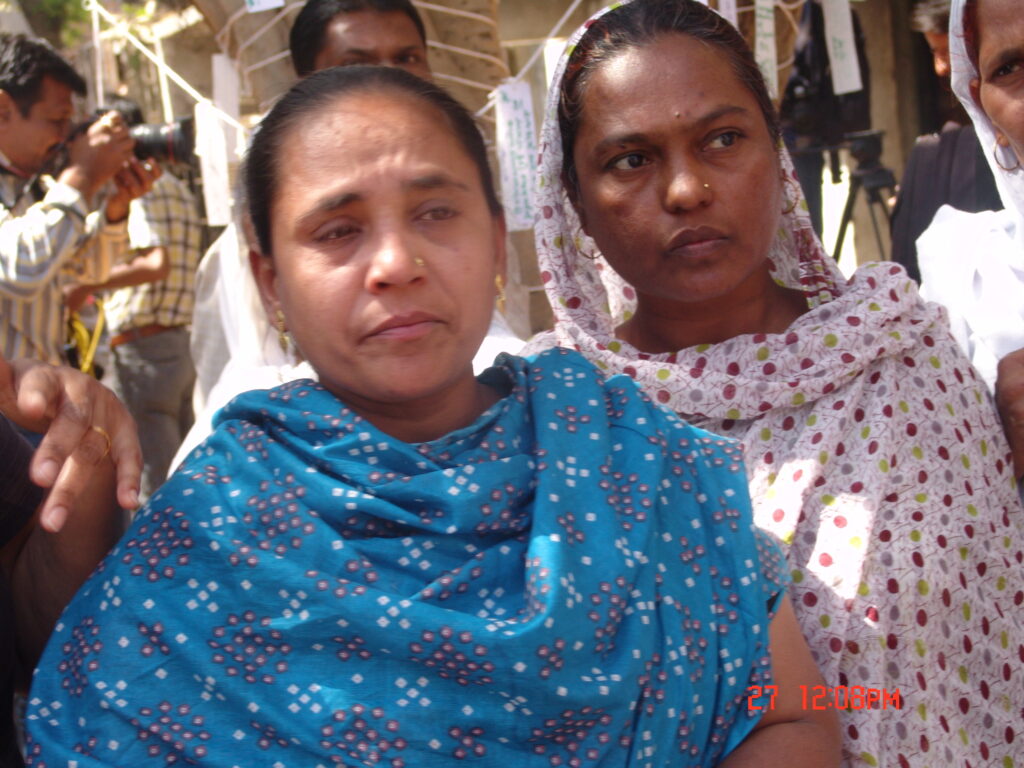
The gendered violence during the Gujarat riots was unparalleled in its brutality. Women were raped, mutilated, and killed, often in broad daylight; their bodies used as battlegrounds for communal hatred. The systemic nature of these crimes was evident in the way women were specifically targeted, often in public settings, as a means of humiliating the entire community. Survivors, however, refused to let these crimes be erased from history. According to officially admitted records, documented by Citizens for Justice and Peace, 97 women eye-witnesses played a critical role in criminal trials related to the massacres. Despite immense pressure, intimidation, and threats, they deposed before courts, describing the horrifying acts of sexual violence and targeted attacks in explicit detail. State Intelligence Bureau figures admitted to 99 cases of gendered violence though citizen’s efforts put the figure at twice the number.
In cases such as the Naroda Patiya massacre, where over 110 people were killed, and the Gulberg Society massacre, where at least 69 lives were lost, women testified about the gruesome acts of violence they witnessed or endured. These testimonies included accounts of gang rape, public stripping, and the killing of pregnant women and infants. Women described how mobs used iron rods, swords, and petrol bombs to attack them, often displaying a sadistic violent brutality in each of the attacks. The testimonies highlighted the premeditated nature of the mob violence as also the utter complicity of the state, from local police to other authorities.
The struggle to document sexual violence was particularly difficult, as official records often downplayed or omitted these accounts. Women survivors and activists persisted, ensuring that evidence of rape and brutalisation was included in legal proceedings and public records. Forensic reports were often manipulated or withheld, and in many cases, there was an absence of medical documentation due to the fear instilled in victims and their families. Despite these hurdles, women continued to speak out, determined to create a historical record that could not be erased.
Women who stepped forward to testify faced relentless harassment. Many were forced to relocate multiple times due to threats from the accused and their supporters. In some cases, male relatives were pressured to withdraw cases or dissuade women from testifying. Police officers and local authorities often refused to file FIRs or conducted deliberately flawed investigations, further victimising survivors. Women were denied legal representation, forced to relive their trauma in hostile courtrooms, and subjected to humiliating questioning by defence lawyers who sought to discredit their accounts.
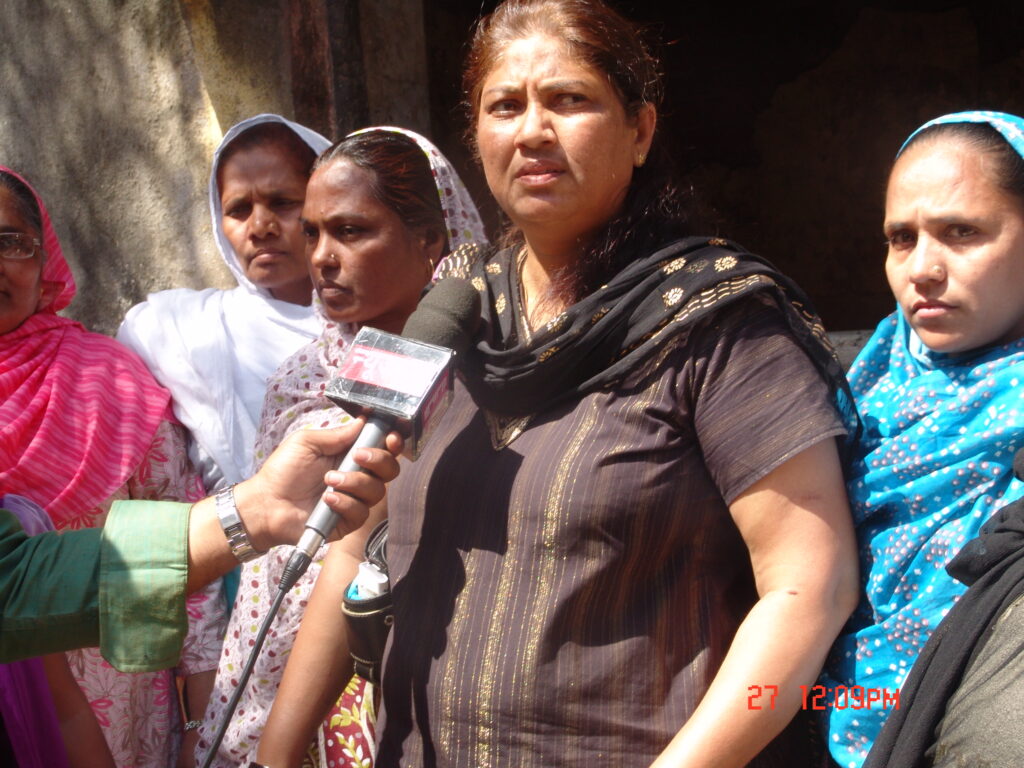
Among those who played a pivotal role in this documentation were women like Bilkis Bano and Zakia Jafri, who recently passed away. As survivors, they turned their personal tragedies into a relentless pursuit of justice, ensuring that accounts of gendered violence were not buried under political pressure. Bilkis Bano’s testimony became instrumental in exposing the extent of sexual violence during the riots, as she recounted how she was gang-raped while her family members, including her infant daughter, were murdered. Zakia Jafri, despite losing her husband, former Congress MP Ehsan Jafri, in the Gulberg Society massacre, fought for years to hold state officials accountable for their complicity in the violence. Their struggles, alongside those of many other unnamed women, challenged state complicity and legal apathy, fighting in courts for years to establish the truth. CJP was among the leading groups that persisted over two decades with legal aid for survivors like Zakia Jafri, Rupa Mody, Saira Sandhi (Gulberg case), Bashirabi and others (Sardarpura case) and Farida bano, Shakila Bano and others in the Naroda Patiya case.
Despite multiple attempts to derail these cases, the persistence of women survivors led to rare convictions in some instances. The Supreme Court eventually intervened to move key cases, including the Best Bakery case, outside Gujarat due to concerns over bias and threats to witnesses. This was a direct result of the relentless efforts of women who refused to back down despite knowing the risks involved.
The importance of women’s testimonies in the Gujarat riots
The documentation of violence by women played a crucial role in countering the official narrative that sought to dismiss or minimise the scale of gendered atrocities. In many cases, the state machinery attempted to frame the violence as spontaneous riots rather than a coordinated attack. Women’s testimonies dismantled this argument by providing detailed accounts of how mobs were armed, how attacks were systematically carried out, and how law enforcement agencies either stood by or actively participated in the violence.
The legal battle that followed the riots was long and fraught with challenges. The initial investigations were deliberately botched, with crucial evidence being destroyed or tampered with. Public prosecutors appointed by the state were often affiliated with the ruling party and acted in ways that favoured the accused. Women survivors, however, continued to file petitions, demand re-investigations, and push for special hearings. Their relentless legal advocacy forced the courts to acknowledge the specific targeting of women during the riots and set legal precedents for future cases of communal violence.
One of the most significant impacts of women’s documentation efforts was the recognition of sexual violence as a weapon of communal conflict. Their testimonies became part of a larger movement that called for reforms in how gender-based violence was prosecuted in mass crimes. Women’s organisations, both within and outside Gujarat, used these testimonies to demand accountability at national and international levels, submitting reports to bodies such as the United Nations and the Supreme Court.
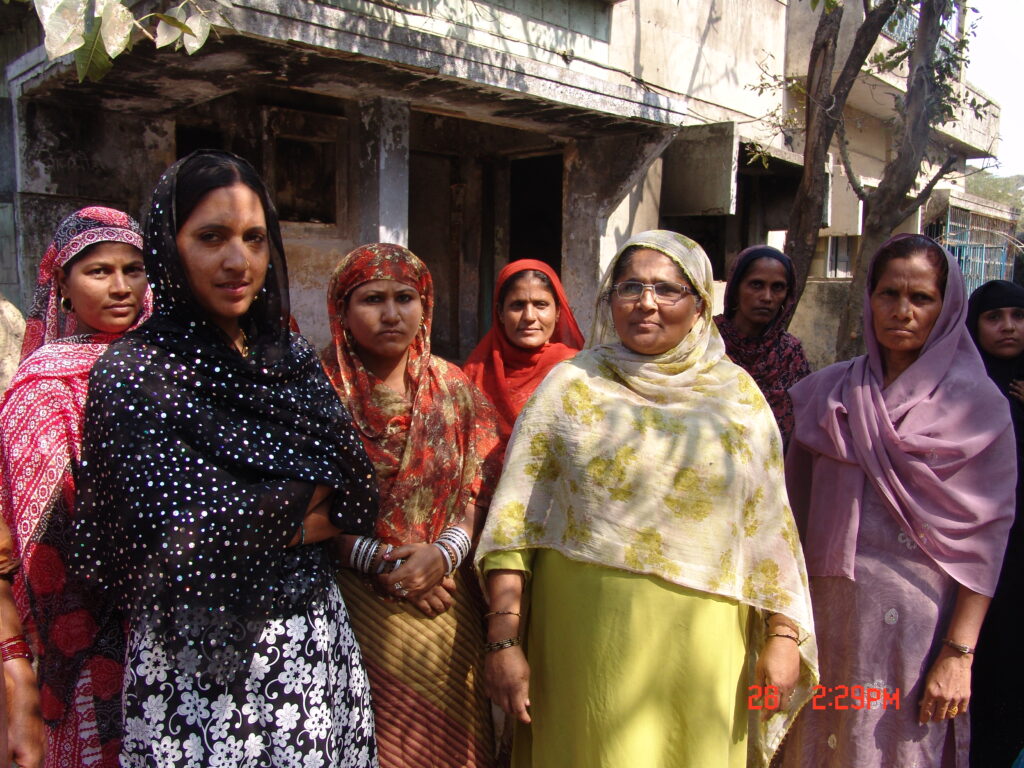
The Gujarat riots of 2002 showcased the brutalisation of women, but they also highlighted their resilience. In the face of unspeakable horrors, women survivors fought relentlessly, not just for their own justice but for a historical record that would not allow their suffering to be forgotten. Their testimonies and legal battles remain a testament to the power of resistance, ensuring that gendered violence in communal conflicts does not fade into obscurity. The documentation of these crimes by women survivors forced India’s legal system to confront the role of sexual violence in communal conflicts and laid the groundwork for future legal battles. Their fight continues to inspire generations to confront hate with courage and demand accountability, even against the most formidable adversaries.
Delhi 2020: The weaponisation of the state against women
The communal violence that unfolded in northeast Delhi between February 23 and 26, 2020, was not a spontaneous riot but an orchestrated attack. The violence, which resulted in the deaths of 53 people—40 of them Muslim—was a brutal response to the anti-CAA protests that had mobilised thousands across the country, led significantly by Muslim women. While the state and the media sought to rewrite the narrative, blaming protestors for the violence, women who had witnessed and experienced the attacks fought to document the truth and seek justice. Unlike past instances of communal violence, where survivors slowly found avenues for legal battles, the women of the Delhi riots faced an unprecedented challenge: criminalisation, incarceration, and continued suppression by the state.
The anti-CAA protests, particularly the Shaheen Bagh movement, symbolised peaceful resistance led by Muslim women. However, these women soon became targets. In Jaffrabad, one of the protest sites, women were on the frontlines, protesting discriminatory citizenship laws when mobs, emboldened by political leaders’ inflammatory speeches, launched targeted attacks. Homes and shops were torched, mosques vandalised, and people lynched. Women who led protests, like Ishrat Jahan, Devangana Kalita, Natasha Narwal, Safoora Zargar, and Gulfisha Fatima were arrested under draconian laws, accused of conspiring to incite the violence they had, in reality, been victims of.
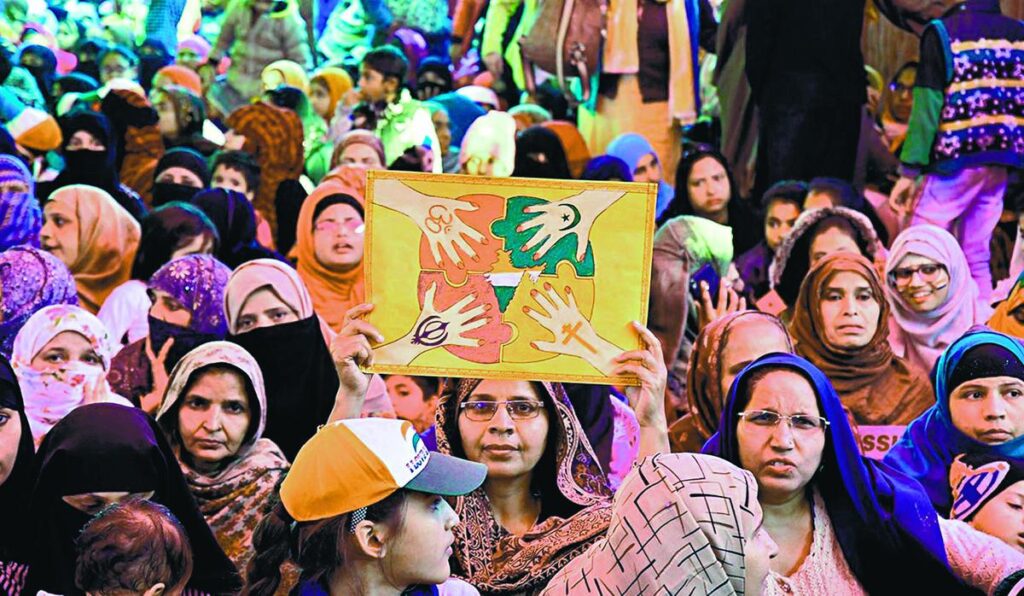
Unlike previous instances of communal violence, where women fought prolonged legal battles for justice, in Delhi, they were pre-emptively branded as conspirators and jailed. Gulfisha Fatima, an MBA graduate and grassroots activist, was arrested under FIR 48, initially granted bail, only to be re-arrested under the Unlawful Activities Prevention Act (UAPA), ensuring her prolonged incarceration. To date, she remains in jail, a stark reminder of how the state weaponised the legal system against Muslim women who dared to resist. Gulfisha remains under arrest as an undertrial, without bail to date, five years later.
Similarly, Safoora Zargar, arrested while pregnant, was accused of being a key conspirator despite a lack of evidence. Ishrat Jahan, a former municipal councillor, was denied bail for years, and when granted, it was seen as an exception rather than a norm. Devangana Kalita and Natasha Narwal, founding members of Pinjra Tod, were arrested and re-arrested on multiple charges, illustrating the state’s relentless pursuit of women activists.
Even those who weren’t arrested faced systemic suppression. Police dismissed the testimonies of women who had lost family members and refused to investigate cases that implicated Hindutva extremists. In courts, victims found their cases delayed indefinitely, while those accused of instigating the riots walked free. The judiciary, instead of upholding justice, repeatedly sided with the state’s narrative, making it nearly impossible for Muslim women to seek legal redress.
The importance of women’s testimonies in countering false narratives
The role of women in documenting the 2020 Delhi riots goes beyond legal battles—it is about preserving the truth against deliberate erasure. The mainstream narrative continues to blame Muslim activists for the violence, while the actual instigators remain shielded by the state. The testimonies, photographs, and first-hand accounts collected by women protestors and survivors challenge this state-sponsored narrative and ensure that the history of these attacks is not rewritten.
In contrast to past instances of communal violence, where survivors eventually found some measure of justice after decades of struggle, the women of the Delhi riots face an ongoing battle where justice remains entirely out of reach. With Gulfisha Fatima still in jail after four years and many others continuing to fight baseless charges, their struggle is far from over. Their resistance, however, ensures that their stories remain alive, refusing to let the truth be buried under propaganda and state repression.
The women of the 2020 Delhi riots fought not just against targeted violence but against a state determined to criminalise their very existence. Their documentation of the attacks, their refusal to remain silent, and their continued struggle for justice in the face of legal persecution exemplify resilience. In a system that punishes those who seek accountability, their fight is one for survival, memory, and truth. Their resistance stands as a testament to the unyielding spirit of women who refuse to let history be rewritten by those in power.
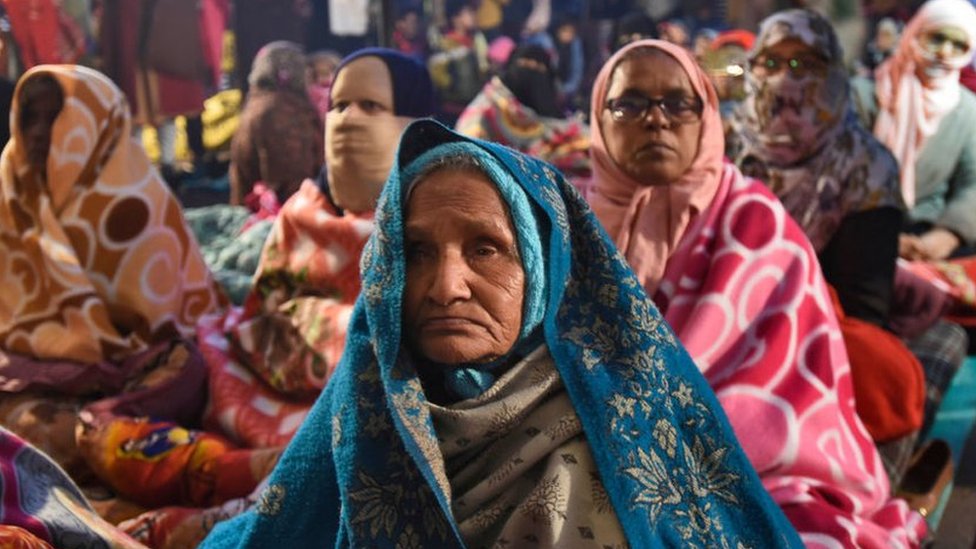
Women and their unyielding fight for truth
Women who have fought for justice in the aftermath of communal violence in India have done so against overwhelming odds. They have defied a state machinery that actively seeks to erase their suffering, a legal system designed to delay and deny, and a society that too often treats them as collateral damage. Their fight has not only been about personal justice but about exposing the larger structures of power that enable such violence.
Despite decades of struggle, justice remains a distant dream. In Gujarat, where a handful of convictions took place, the state machinery ensured that most perpetrators walked free. In 1984, justice came too late for many survivors, with key political figures being convicted only after decades of relentless legal battles. And in Delhi, justice is yet to arrive—Muslim women who dared to protest against discriminatory laws remain imprisoned while the instigators of violence roam free.
The stories of these women force us to confront an uncomfortable truth: the state is not merely a bystander in communal violence but an active participant, shielding perpetrators and punishing those who seek accountability. Their resilience in the face of such repression is a testament to their courage. But their continued struggle also serves as an indictment of a system that has failed them at every level. This International Women’s Day, their fight must not only be remembered but actively supported—for justice, for truth, and for the right to resist oppression without fear.
Related:

